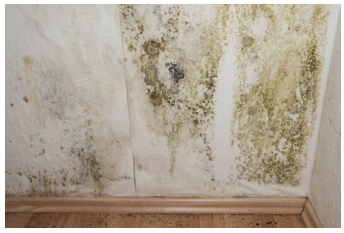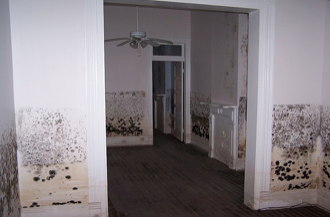Molds are part of the natural environment, and can be found everywhere, indoors and outdoors. Mold is not usually a problem, unless it begins growing indoors. The best way to control mold growth is to control moisture. One of the worst effects of a water damage is the growth of mold and mildew that can begin growing within 24 hours of a fire or flood in your home. This can ultimately destroy your home and result in health issues. It is essential that you contact a restoration contractor directly after a fire or flood.

- Evaluation: Before remediation, the area is assessed to ensure safety, clean up the entire moldy area, and properly approach the mold. The EPA provides the following instructions:
- HVAC cleaning: Should be done by a trained professional.
- Protective clothing: Includes a half- or full-face respirator mask. Goggles with a half-face respirator mask prevent mold spores from reaching the mucous membranes of the eyes. Disposable hazmat coveralls are available to keep out particles down to one micrometer, and protective suits keep mold spores from entering skin cuts. Gloves are made of rubber, nitrile, polyurethane, or neoprene.
- Dry brushing or agitation device: Wire brushing or sanding is used when microbial growth can be seen on solid wood surfaces such as framing or underlayment (the subfloor).
- Dry-ice blasting: Removes mold from wood and cement; however, this process may spray mold and its bi-products into surrounding air.
- Wet vacuum: Wet vacuuming is used on wet materials, and this method is one of those approved by the EPA.
- Damp wipe: Removal of mold from non-porous surfaces by wiping or scrubbing with water and a detergent and drying quickly
- HEPA (high-efficiency particulate air) vacuum: Used in remediation areas after materials have been dried and contaminated materials removed; collected debris and dust is stored to prevent debris release.
- Debris disposal: Sealed in the remediation area, debris is usually discarded with ordinary construction waste.


